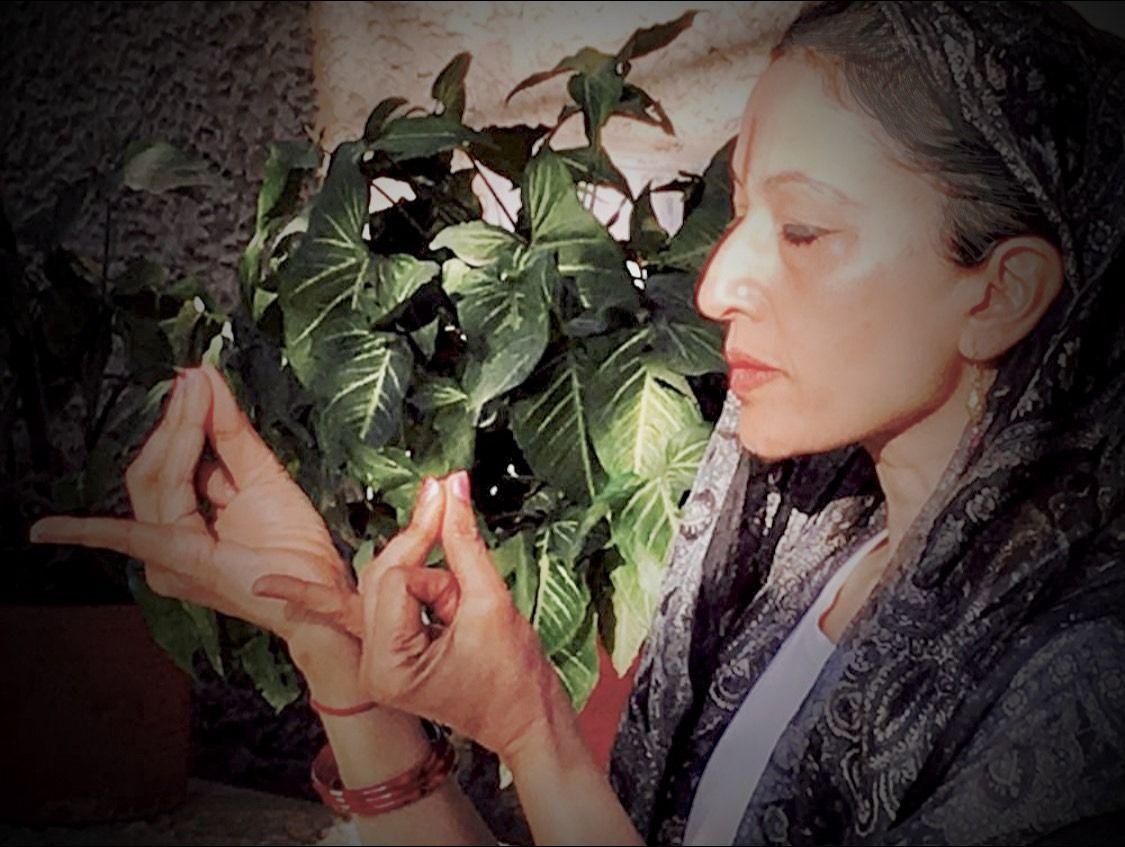Today, an ever growing number of people are searching for a connection with their ‘true’ self or ‘deeper’ self. People are becoming more spiritually inclined and consequently there has been widespread dissemination of practices which were earlier known to very few. Today learned yogis, mystics and yoga teachers are explaining the holistic health benefits of various ancient yogic practices, such as the practice of yoga ‘Mudras’.
In Yoga, the term ’Mudras’ refers usually to different hand gestures in which the tips of the thumbs and fingers are placed in particular positions to stimulate the flow of panic energy to desired regions of the body, to bring about balance, healing and health. Our fingers and thumbs represent the five elements of which we are composed. The thumb represents the fire element, the index finger represents the air element, the middle finger is representative of ether, sky or space element, the ring finger represents earth and the little finger stands for the water element. Placing any fingertip with the thumb tip, increases that element within us and placing the fingertip at the base of the thumb, decreases that element within us. Using this deep science of ‘Mudras’, we can redirect the ‘life force’ within us in a manner which will restore our internal balance.
’Mudras’ are also formed by certain body positions and eyes positioning as well. Some ‘Mudras’ are performed along with certain ‘Bandhas’, ‘Asanas’ and ‘Pranayama’, which work as very powerful combinations and have dynamic results.
For heart health, certain ‘Mudras’ positively influence circulation and stress reduction, and enhance overall cardiac function. Lets delve into these.
1 Anjali Mudra (Prayer Pose)
This is a simple yet powerful gesture that symbolizes the acknowledgement of the same divinity within all beings. We need to bring our palms together in front of the chest, at the heart center to perform this Mudra. All our fingers and thumbs of the left and right hand should be perfectly aligned, pressing into each other. This activates our heart chakra, promoting emotional balance, dispelling anxiety, and reducing the risk of heart-related ailments.
2 Gyan Mudra (Knowledge Pose)
The Gyan Mudra is formed by touching the tip of the index finger to the tip of the thumb while keeping the other fingers stretched straight. As its name suggests, ‘Gyan Mudra’ is believed to improve memory, concentration and mental focus by stimulating the brain and nervous system. As this mudra can help people to regain focus and achieve clarity, it supports heart health by reducing mental stress and fostering a sense of inner peace.
3 Hridya Mudra or Apana Vayu Mudra (Heart Mudra)
In the ‘Hridya Mudra’ or ‘Apana Vayu Mudra’, we bring the tip of the index finger to the base of the thumb, we touch the tips of our middle and ring fingers to the tip of the thumb, leaving our little finger extended out straight. The Apana Vayu mudra regulates the vital functions of the heart, like heartbeat and blood circulation, and promotes cardiac health and stability for supporting optimal functioning of our heart and vascular system. This Mudra is also called the ‘Mritya Sanjeevani Mudra’ and is said to be so potent that it is believed if one performs this Mudra during a heart attack, one can arrest the heart attack.
4 Surya Mudra or Agni Mudra
‘Surya Mudra’ is performed by placing the ring fingers of both hands at the base of the thumb and pressing the thumb down on the ring finger. The other three fingers are kept extended out straight. It is not a well known fact that the thyroid hormone has a direct impact on heart function, blood vessels and cholesterol levels. The ‘Surya Mudra’ stimulates the metabolic functioning of the Thyroid gland, which helps lower levels of bad cholesterol, thereby reducing the risk of heart blockage.
5 Prana Mudra (Vitality Pose)
The Prana Mudra is a dynamic gesture that enhances the flow of life force throughout the body. It revitalizes the entire system, including the heart and lungs for better cardiovascular health and resilience. To perform this Mudra, we touch the tips of the ring and little fingers to the tip of the thumb while keeping the first two fingers extended.
To know more about Mudras, how they work, and how they can benefit us, Join Online Yoga Virtual Classes with Yoga with Sapna today and continue your education on all aspects of yoga including ‘Mudras’
